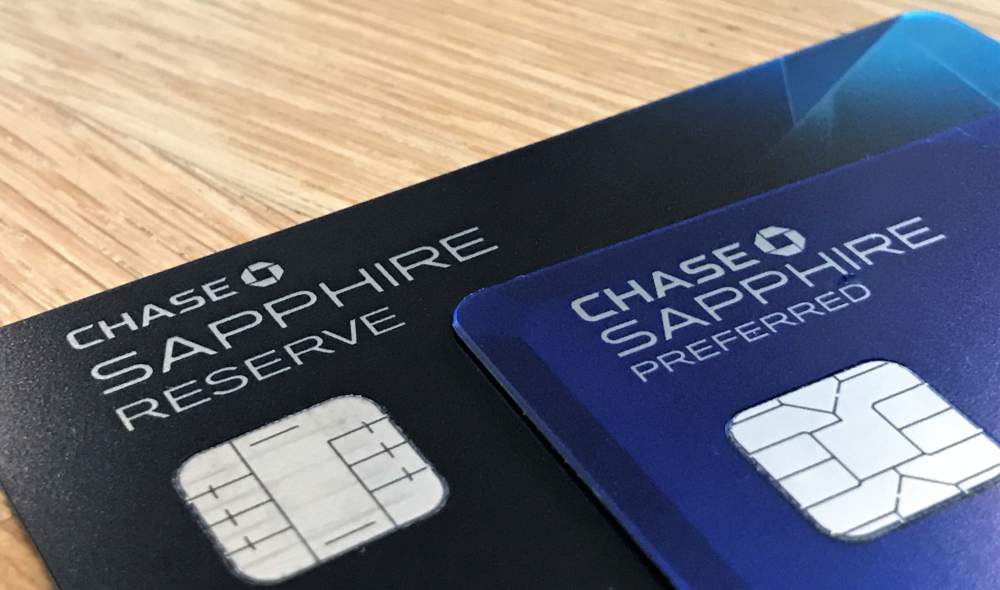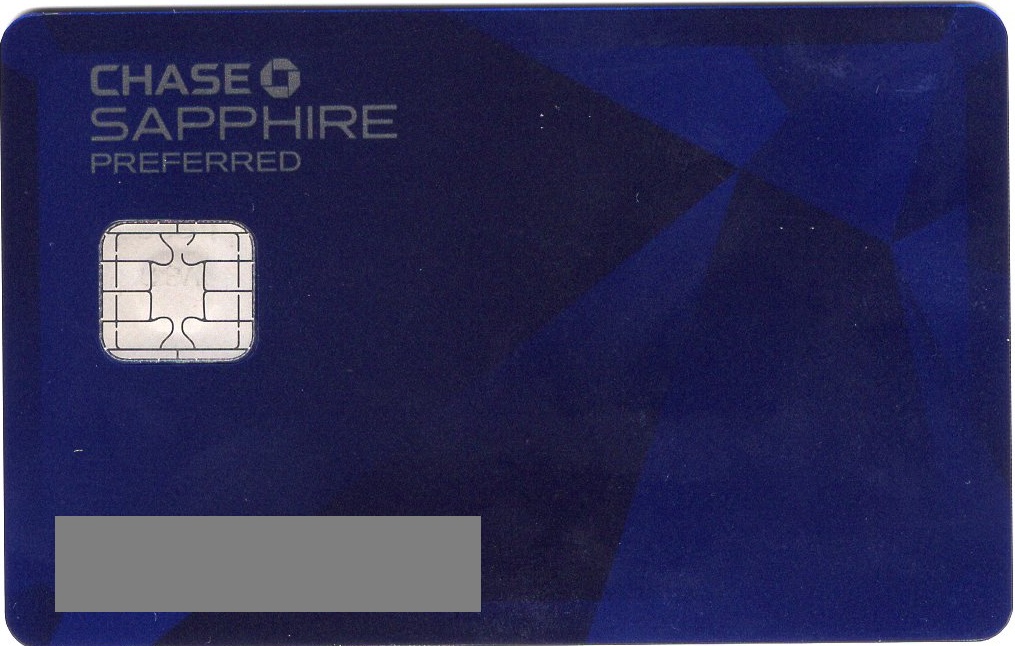
A week ago, . The Freedom Visa card (with its 5% rotating categories) will be replaced with the new Freedom Flex Mastercard. And, both the new Freedom Flex and the existing Freedom Unlimited cards will gain the ability to earn 3X points for dining and drugstore purchases, and 5X points for travel booked through Chase.
Both Freedom cards are fee-free. And, in both cases, even though Chase advertises them as cash back cards, they really earn Ultimate Rewards points. As such, it’s possible to move those points to a premium Ultimate Rewards card such as the Sapphire Preferred, Sapphire Reserve, or Ink Business Preferred in order to get more value from those points. For example, you can now earn 3X to 5X points per dollar with either Freedom card for drugstores, dining, and travel booked through Chase and then move those points to another card in order to transfer points to airline or hotel programs or to pay for travel with points at a rate of either 1.25 cents per point with the Sapphire Preferred or Ink Preferred or 1.5 cents per point with the Sapphire Reserve. You can alternatively then use Chase’s Pay Yourself Back feature to get up to 1.5 cents per point value when erasing statement charges. The latter means that the Freedom cards’ 3X and 5X categories are worth up to 4.5% and 7.5% back. That’s huge.
Sad little Sapphire Preferred
Those of us in the know realize that the changes to the Freedom cards make the premium Ultimate Rewards cards more valuable because you need one in your household in order to get more value from the points earned on your Freedom card. But keep in mind what I said before: Chase advertises the Freedom cards as cash back cards. As a result, most consumers don’t know that the Sapphire cards can unlock more value from the Freedom cards’ rewards. Most consumers, I think, will see the Freedom cards as much better options than the Sapphire Preferred…
The Sapphire Preferred card, which costs $95 per year, earns 2X for travel and dining (and 5X for Lyft). When the card was introduced approximately 10 years ago, that was awesome. Today, it looks pathetic, especially in light of the Freedom card revamp. Instead of the Sapphire Preferred card’s 2X travel and dining, you can now get a fee-free Freedom card that earns 5X travel (booked through Chase) and 3X dining. The addition of 3X drugstore; and 5X rotating categories (Freedom Flex) or 1.5X everywhere (Freedom Unlimited) is gravy. Even if you consider that the Sapphire Preferred’s points are worth 25% more towards travel, that brings the Preferred card’s earning rate to only 2.5% from travel and dining.
The Sapphire Preferred card has real value above the superficial comparison in earning rates detailed above. For example, not only are points worth more (and are transferable to airline and hotels, unlike with Freedom cards), but the Sapphire Preferred has no foreign transaction fees and much better travel protections that the Freedom cards (including primary car rental insurance, for example). These are not headline grabbing benefits though. I expect that most consumers will look at the annual fee and the earning rate and will give the card a hard pass.
Chase isn’t stupid. I have no doubt that their Sapphire team is fully aware of the Sapphire Preferred card’s weakened marketing position. They have to do something. What should they do?
Greg’s Sapphire Preferred Recommendation
I’d like the Sapphire Preferred to move to 3X dining, 3X grocery, 3X gas, and 3X travel (5X for travel booked through Chase). 3X dining is a necessary minimum to make the card competitive with Chase’s own Freedom product. Same with 5X travel booked through Chase. The 3X grocery, gas, and travel categories are recommended to make Chase competitive with the $95 Citi Premier card which earns 3X for grocery, gas, dining, and select travel (flights, hotels, travel agencies).
Not long ago, recommending 3X earnings for dining, grocery, gas, and travel would have been unthinkable for a $95 per year card. Citi, though, showed that it could be done. And Chase itself made it necessary by overshadowing the Preferred card with their own Freedom cards.
Sapphire Reserve Looking Tired

Chase’s Sapphire Reserve card debuted only 4 years ago and it then made a huge splash with 3X travel and dining, and 1.5 cent per point value. Since then, US Bank matched Chase with 3X earnings and 1.5 cent per point redemptions on their Altitude Reserve card. And Amex fought back with their Gold Card which earns 4X dining (worldwide), 4X grocery (US-only on up to $25K in purchases per year, then 1x), and 3X for flights booked directly with airlines or through Amex Travel.
While the Sapphire Reserve card’s point redemption value is still competitive and the card’s travel protections are still best-in-class (see this post for details), the earning rate is no longer good enough. Cards that cost far less now offer much better transferable point earnings.
Of course, if the Sapphire Preferred card’s earning rates are increased (as I believe they must be to remain competitive), the Sapphire Reserve will have to outdo the Sapphire Preferred to continue to command such a huge premium (the Sapphire Reserve currently costs $550 per year with $360 per year in rebates).
Greg’s Sapphire Reserve Recommendation
Since the Sapphire Reserve card was introduced, I’ve liked the fact that it was better than the Sapphire Preferred in every way (except the annual fee). It makes sense to consumers: you can pick the $95 travel card with 2X travel and dining and 1.25 cents per point rewards or the much more expensive travel card with 3x travel and dining and 1.5 cents per point rewards (along with some other perks like Priority Pass). I’d like to see the Sapphire Reserve continue that tradition. The Sapphire Reserve should continue to best the Sapphire Preferred in every way.
Given that I recommended that the Sapphire Preferred move to 3X earnings on a number of categories, the obvious direction for the Sapphire Reserve is to move to 4X earnings on those same categories. I’d like the Sapphire Reserve to move to 4X dining, 4X grocery, 4X gas, and 4X travel (5X for travel booked through Chase). 4X dining and grocery simply matches the less expensive Amex Gold card while 4X gas and 4X travel becomes industry leading. I think they could get away with 3X gas and 3X travel (as long as they keep the 5X travel booked through Chase idea), but that would be a minimum requirement to stay competitive.
Conclusion
Chase’s Sapphire lineup is no longer competitive. First, the pressure came from others (especially Amex and Citi), but now it also comes from within thanks to adding 3X categories to their Freedom cards. In response, I recommend that Chase make the following changes:
- Sapphire Preferred:
- Current: 2X dining and travel
- New: 3X dining, 3X grocery, 3X gas, and 3X travel (5X for travel booked through Chase)
- Sapphire Reserve:
- Current: 3X dining and travel
- New: 4X dining, 4X grocery, 4X gas, and 4X travel (5X for travel booked through Chase)
A few years ago, I would have felt silly making the above recommendations. It would have seemed far too generous. Now, though, these recommendations strike me as just enough to make the two cards competitive and once again newsworthy.
What do you think? If Chase made these recommended changes would you be excited about their Sapphire lineup? Are there other changes Chase ought to make?






[…] than taking my advice to add 3X categories to make the Sapphire Preferred attractive again, they decided to apply some lipstick. Don’t […]
I believe Chase is trying to attract a larger customer segment base with the revamping of the Freedom Flex. Honestly, I don’t think Chase can add any more value to the Sapp Preferred and Sapp Reserve lineups, it’s going to increase costs for Chase, and I don’t think they want to do that, nor do I think they can afford it, especially during this time.
[…] Chase Sapphire: What’s Next? (On My Mind) […]
This is a pipe dream, to be honest.
AMEX has very few options to cash out points for hard cash. The only optionS are the Schwab Platinum, and that is a niche card at best, or the Business Gold/Platinum with their 25%/33% rebates. For everyone else, flights booked through AMEX travel only get you $0.01/pt and a $25 booking fee. You can’t even book a hotel with MR for $0.01/pt. We have no idea how much AMEX pays its partners for their points, but I would guess the overall average cost per point to AMEX is less than $0.01/pt.
Chase on the other hand has a $0.01/pt floor and if you have a CSP or CSR it goes up to $0.0125/$0.015. I would bet anything that the average cost per point at Chase is higher than the average cost of a point at AMEX.
Assuming that’s the case, Chase can’t match AMEX point for point since their incremental cost is already higher. We already know the CSR is a loser for Chase, how can you expect them to make it even better?
You mention about the benefits of the Preferred card that are not highlighted as much but there are benefits of the reserve card that could equal the difference between the rebates and the cost of the card. Also, for most members the fee is not $550 but rather still at the old rate of $450. Another useful point is the lower chase cards do not charge for adding people but the Reserve card does.
if that happens i most likely would give up my american express gold card for my dining and groceries.
If CSR goes to 4x on travel, then I have no reason to keep carrying the World of Hyatt Visa.
I would assume that
CSP: 3X Travel/Dining/Grocery, matching Citi Premier but no Gas, maybe selective 2X categories.
CSR: 5X Travel/Dining/Food Delivery, 3X Grocery/Streaming/Gym.
I’m surprised no bloggers have considered my fear which is Chase ends the ability to move points from the Freedom Cards to a Sapphire Card. This would make the Freedom Cards true cash back cards as most people outside the hobby already consider them to be. I lose most people when I start explaining how to pair Freedom Cards with a Sapphire card to redeem for travel at a higher rate or transfer to a travel partner. This change would make the Freedom Cards a little less rewarding for those of us enthusiasts but likely wouldn’t impact a majority of their cardholders who don’t understand the benefit of pairing Freedom Cards with a Sapphire Card.
As you pointed out, most Freedom cardholders consider it a cashback card. I imagine the percentage of Freedom holders moving points to CSP/CSP/CIP is not the high. Plus, it provides some extra incentive to keep cards that have AF. Other programs (TY/MR) let you bundle the points from no-AF cards with premium cards, don’t think Chase will want to complicate things by trying to remove the ability to transfer earnings from Freedom cards to premium cards.
Does anyone know if the statement credit from redeeming points against dining on CSR is considered taxable by Chase? (i.e., will they send 1099 if I go over $600?)
I’m personally would like to see 1.5x everywhere and 2x travel like the BOA travel reward instead of adding grocery to CSP… I don’t mind the low multiplier though because CSP already have a tons of protection. I just hope Chase add more transfer partner to its list. It’s getting pretty boring with just Hyatt and United in the mix. May be bring back Korean, or add Japan Airlines, or at least Aeroplan…
I could see them making minor changes to the CSR and maybe turning the CSP into their version of the Amex Gold card.
Any thoughts on CSP sign up bonus? Anticipate any Chase changes here as well? I’m past 48 months and wondering if I should grab current bonus or wait.
Between this announcement and now that I’m finally under 5/24, I did a product change from my CSP to Freedom in order to apply for the first time for a CSR and get a sign up bonus. Does anyone know how quickly you can apply for a Sapphire after product changing out of one to get flagged for instant rejection?
I’m slow so please forgive me.
The new Freedom cards are AF-free and outperform my CSR with their new categories. If Chase fails to improve the CSR’s perks, why should I keep it and not transfer down to the CSP?
The AmexPlat has hotel status and other perks for the same AF. Shouldn’t Chase have some improvements planned soon despite low travel?